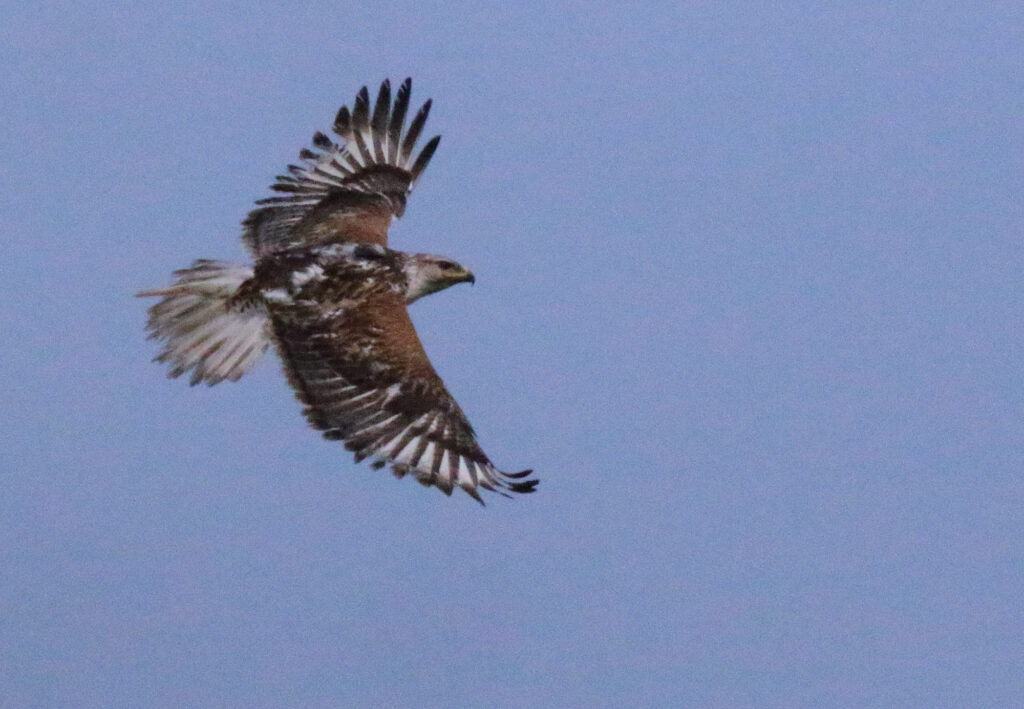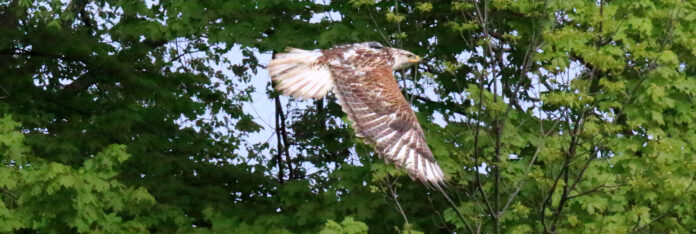The hawk normally found in Western Canada will be part of a project to track vagrant birds
When Linn Eves got the call to about a hawk on the side of the road in Erieau, she had no idea how rare of a find it would be.
On May 3, an Erieau resident called the Bluewater Raptor Rehablitiation Centre after seeing the bird floundering near the road. It’s believed it had been hit by a car while feeding on roadkill.
Samantha Ethier went to Erieau to pick up the bird, which suffered minor head trauma and leg scrapes. When the hawk arrived at the Rehabilitation Centre, Eves found a hawk she had not seen before in person – a Ferruginous Hawk – which are native to the grasslands and open country of western North America mostly in Alberta and Saskatchewan in Canada. The bird, experts from Bird Canada say, had likely been blown off its migration course during a storm.
Eves treated the bird with anti-inflammatory medicine, antibiotics, pain medication and medicine for stress while in captivity
Eves first though the bird was a Rough-Legged Hawk because of the feathering right to the bottom of the feet – but its feet were too large and the head was different. Eves went to her books and “felt I had a bird that didn’t belong and was a long way from home.”
Eves confirmed her belief it was a Ferruginous Hawk with by sharing pictures with the Hawk Cliff Raptor Banders. Word of the rare bird in Ontario spread and soon the The Hawk Cliff Raptor Banders and Birds Canada began to coordinate a potential tracking project for the bird
Tracking rehabilitated birds, especially lost ones, is long-term study, according to Stu Mackenzie with Birds Canada. He’s been tracking everything from songbirds to white wing doves to Blue Buntings and now a hawk in the vagrant birds tracking project.
Mackenzie and Ernesto Carman from Birds Canada and Charlie Fowler and Cyril Cocker from the Hawk Cliff Raptor Banders arrived at the Bluewater Centre early Saturday morning. Fowler and Eves quietly entered the enclosure where the Ferruginous Hawk had been making its home since early May and captured the bird using a large fishing net. Fowler quickly took hold of the bird’s dangerous talons used to rip apart the small animals – rabbits and groundhogs – the hawk feeds on.
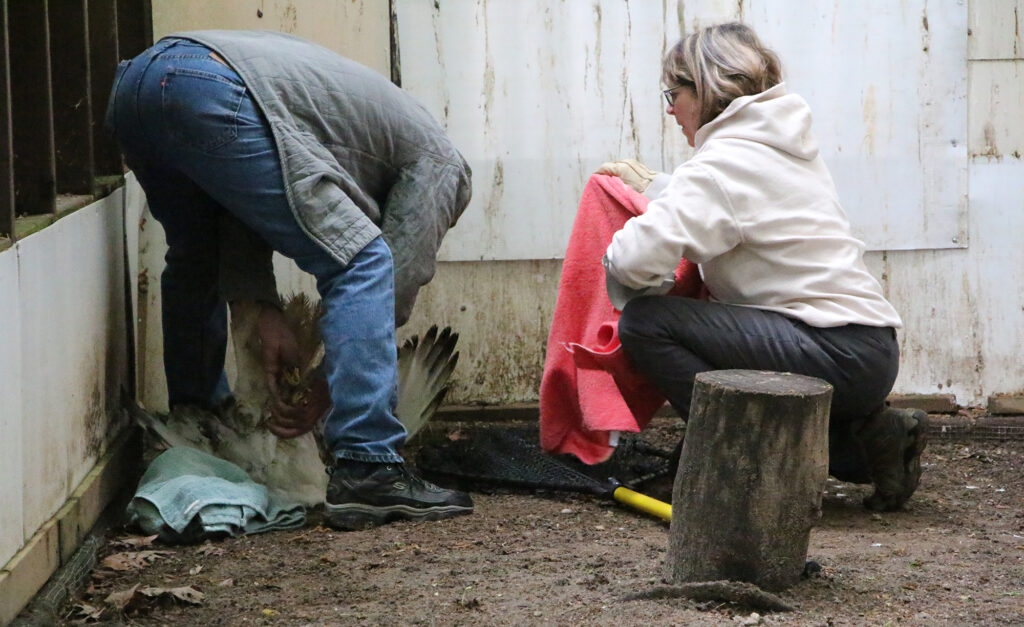
Eves and Fowler emerged from the enclosure with the hawk under a towel to keep it calm, Fowler still holding tight to the legs of the hawk as they brought it inside to be examined.
The female hawk was likely two years old, Fowler and Cocker estimated as they careful measured and banded the hawk’s leg.
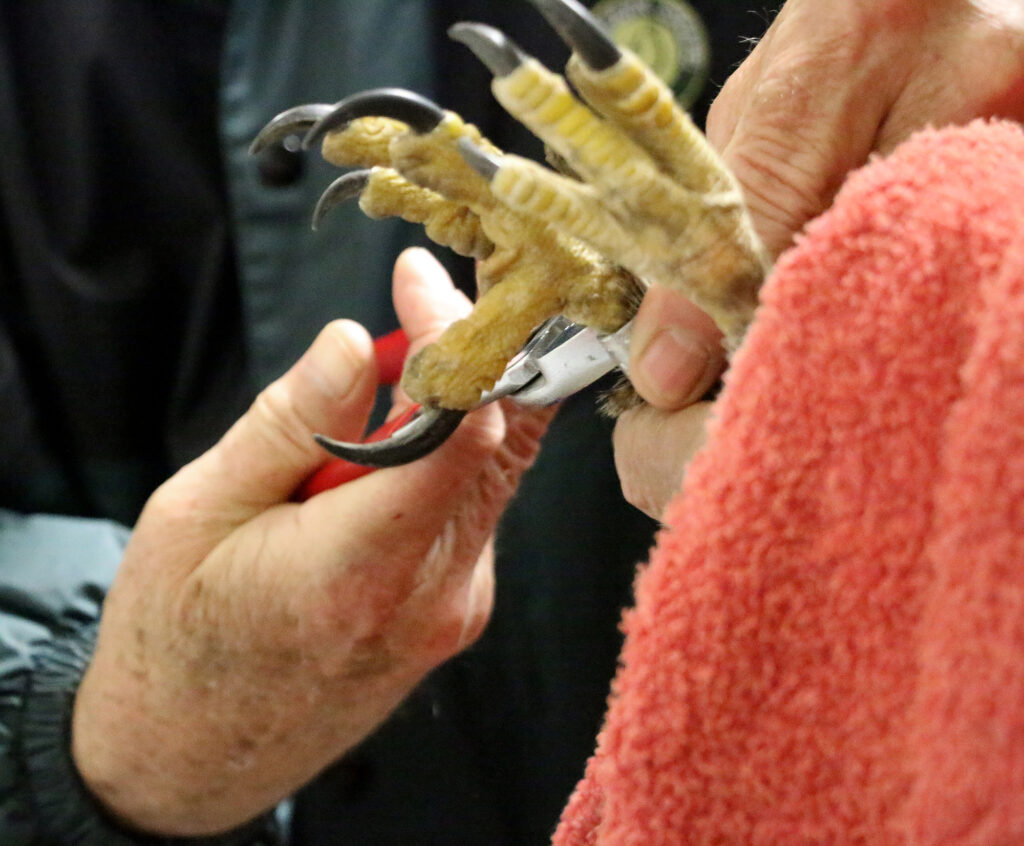
Using a field guide, they stretched out the Ferruginous Hawk’s wings to see if the markings matched. The bird, poked its head from the towel as men worked in the quiet room.
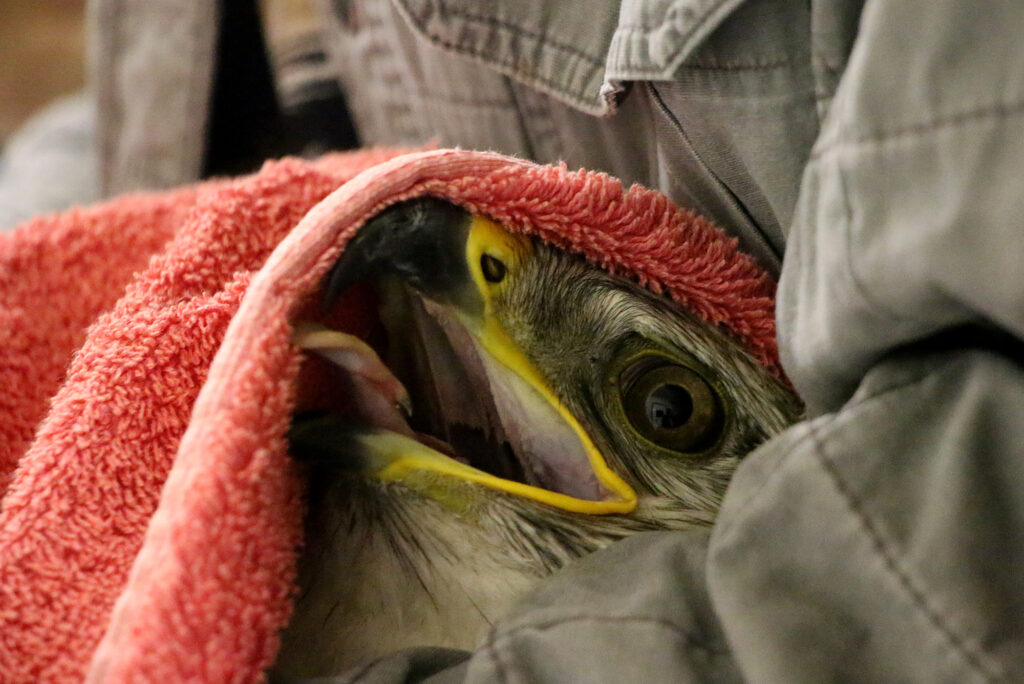
Next, the odd ritual of weighing the bird. Fowler and Eves carefully placed the hawk on a towel and rolled the bird up like a burritto. The towel was then placed into a tube and on the scale. The young bird, who wasn’t able to catch its usual prey for dinner, was a little lighter than it should be, about 1.8 kg, but still in the healthy range.
The Ferruginous Hawk seemed calm through the process, but when it came time to take it out of the tube and towel, the hawk chomped down on Fowler’s finger. Eves found a band aid and the next phase of the project continued.
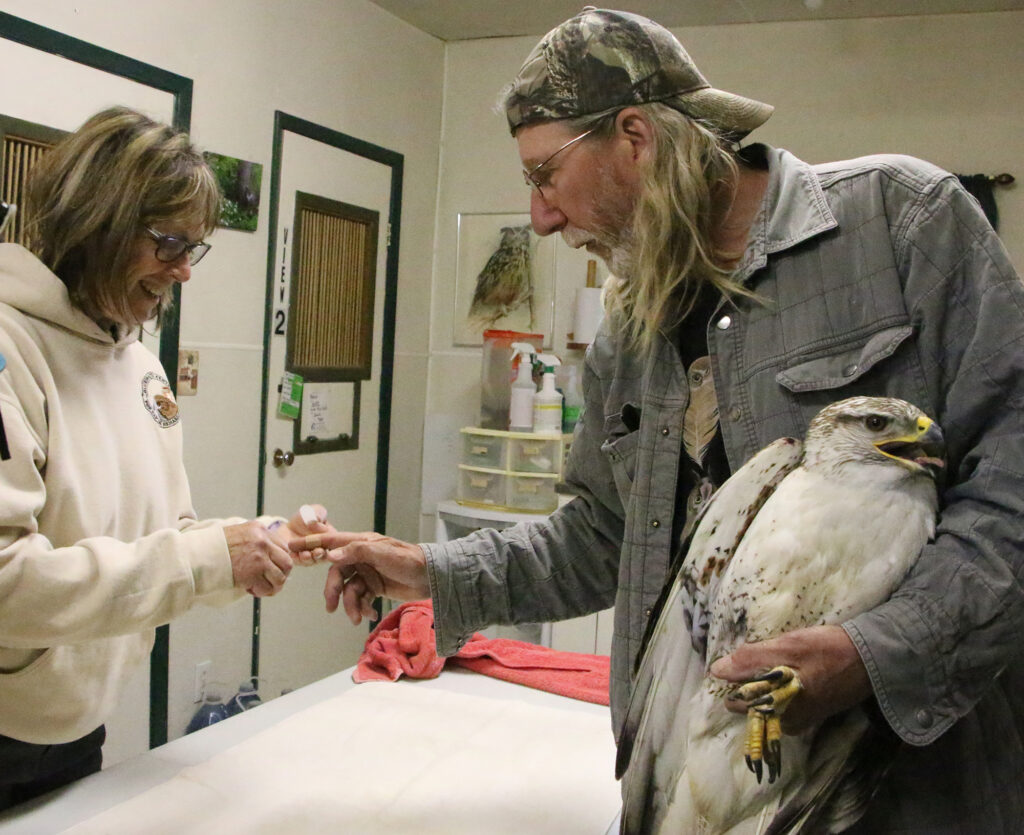
Mackenzie and Carman had brought a small transmitter that needed to be tied to the hawk so its movements could be tracked. The men, with Fowler still holding the hawk’s talons fast, worked quietly and gently to attach the black box about the size of a matchbox.
Mackenzie says the transmitter – with solar panels on top to keep it active as long as the hawk lives – will start to answer some of the mysteries of why birds get lost.
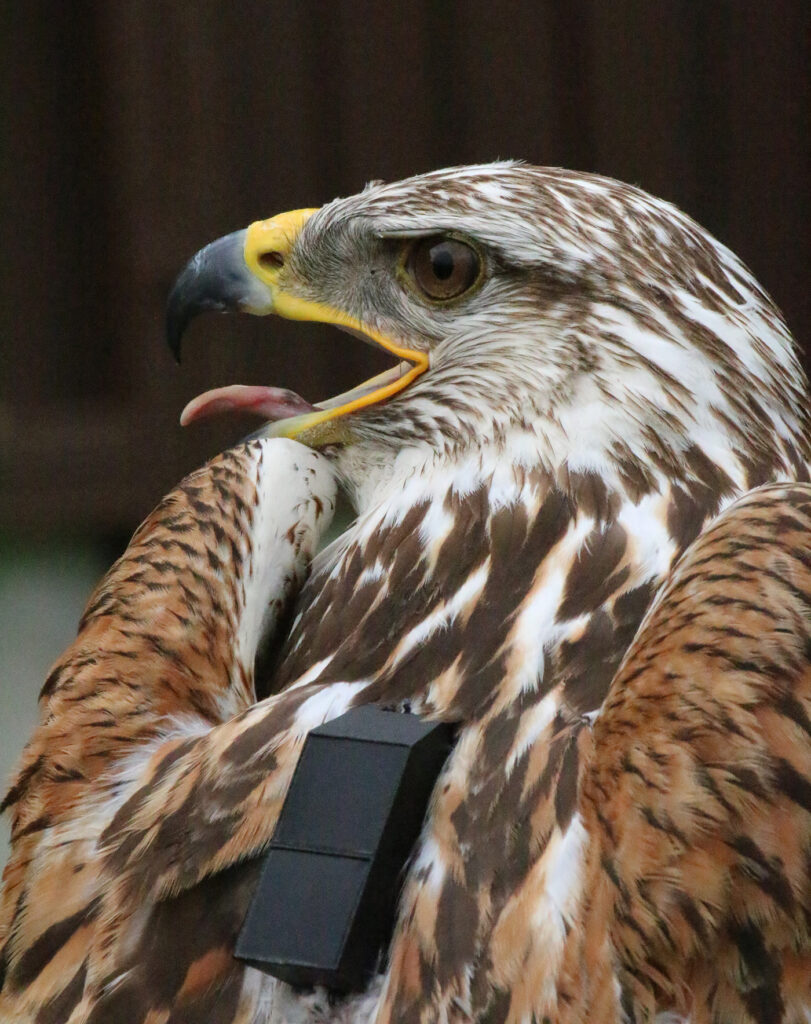
“Why do they get lost? Do they survive when they’re lost? Do they survive after rehabilitation? Where do they go after being lost? Will find its way home? Or is it permanently stuck in the east? It’s unique situations like this that allow us to start to answer those types of questions,” says Mackenzie, moving the hawks feathers to cover the thin rope which will hold the transmitter as it travels.
“By studying the misfits, you can learn a lot about them all. And particularly its interesting with the misfits just because they do garner so much interest and attention in the birding and conservation community…It’s mostly a question of scientific interest; why birds vagrate to begin with and do they survive? Do they find their way home?”
“It’s rare that you can get your hands on a bird like this,” adds Eves. “A birder might see it but then its gone.”
With the transmitter carefully attached, it was time for the Ferruginous Hawk to return to the wild.
The small group made its way outside to a large grassy area at the centre. A few volunteers and supporters of Eves rehabilitation efforts had gathered to get a look at the rare bird and watch it fly off to its next adventure.
After a few photos, Fowler tossed the hawk skyward. But, it wasn’t ready to fly.
The bird feeling of the transmitter on its back, lay in the grass – talons out – in attack mode. Mackenzie walked toward the bird and put his jacket over the birds legs and began picking it up. The Ferruginous Hawk took a couple of good chomps at his hand and was quickly covered up and returned to the enclosure.
Eves would give it time before trying again. In the privacy of the enclosure, the hawk learned to fly around with the foreign object on its back. That’s when Eves knew it was time for another try.
Around 11 am, with only a few people watching, Eves emerged from the enclosure with the Ferruginous Hawk under a towel. As she prepared to release it, the bird spread its massive wings and began to take flight and then landed on the ground again. It got its bearings and then, with a little prompting from Eves, flew off to perch in a tree nearby.
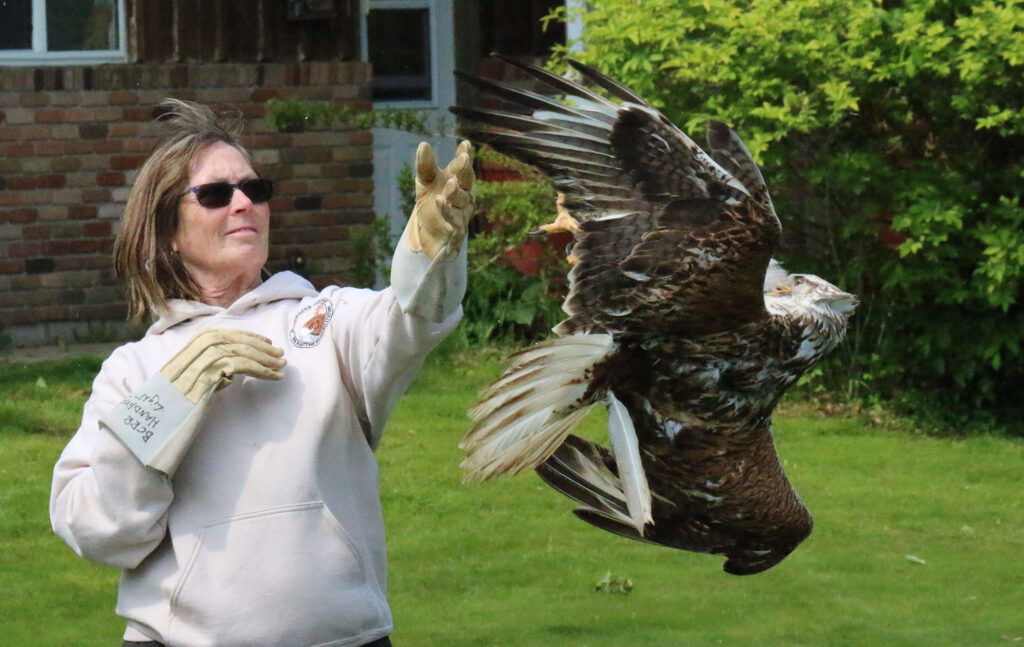
Mackenzie will monitor its movements and wonders where it will end up. “The bird may not go anywhere for some time, it may make big movements, or it may wait until fall migration to depart south for the winter. It may also have difficulty surviving, but we of course hope that’s not the case.”
